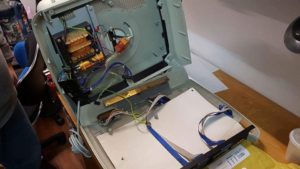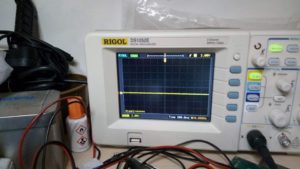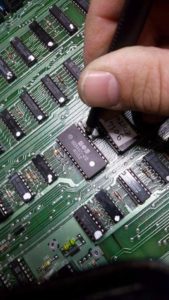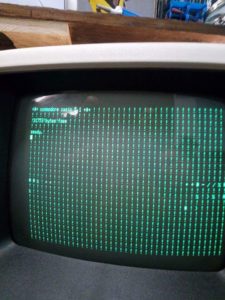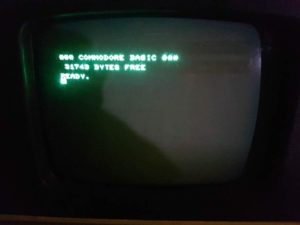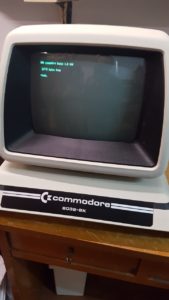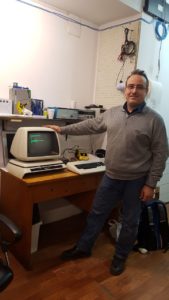Per leggere l’articolo in italiano clicca qui
Commodore PET 8032-SK (owned by our association’s member, Marco Vanesio) restoration.
Marco reported us the worst case scenario: the black screen defect. There’s no lifesign from the old computer.
It’s another great chance to use the brand new association oscilloscope, which has been recently purchased to debug our Galaksija prototype.
A friend of mine, and an association senior member, Michele Perniola, spent some time during unforgettable night chats, pointing to me the necessary instructions to get the necessary measurements to identify the possible fault(s). The whole association crew followed those chats as if they were witnessing the dialogues between the Houston command center and the Lunar Excursion Module.
I tested every mainboard activity, from CPU to eproms. CPU was in working order but the system performed cyclical reboots. I then checked all the RAMs with the help of a little “PET cousin”, a Sinclair ZX Spectrum. So, I found out three defective 4116 chips. Neverthless, the computer still did not boot. But now there were some strange oscilloscope readings out of the CRT 6545 chip.
The CRT replacement proved to be decisive. At last, we could hear the PET characteristic boot sound. The monitor showed us a so-called “garbage screen”. A big step forward, for sure!
There are two cursors in the screen. Furthermore, the computer also writes random characters by itself.
The diagnosis was relatively easy: the PIA 6520 chip (keyboard controller) wasn’t working. So we replaced it. The computer started to process the keyboard inputs. But, after typing every command, the only computer answer was a “sintax error” message. Furthermore, the screen was still full of exclamation marks.
A further analysis lead us to think about a short circuit on the video line between the CRT and its RAM or ROM, located on the D0 data bus. So I decided to use a Commodore C64 to test the SRAM (although we already used an eprom programmer to perform a functional test of those chips).
Well, this further test proved to be decisive, helping us to isolate a defective SRAM 2114.
After the SRAM was replaced, the computer finally regularly booted, showing us the well-known message of the commodore basic 4.0. Everyone in our laboratory was exultant. This little PET proved to be an hard challenge.
The achieved result confirms our group spirit, full of friendship and passion for the computing history.
Antonio Caradonna
